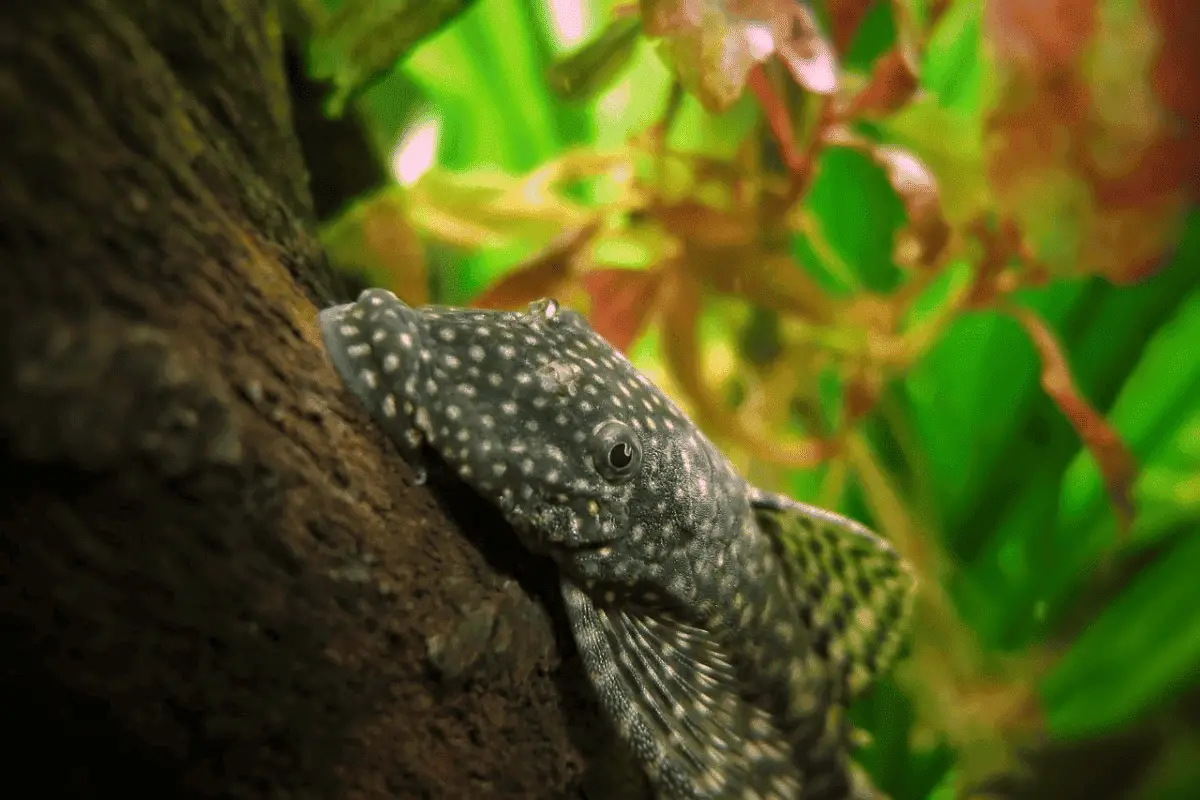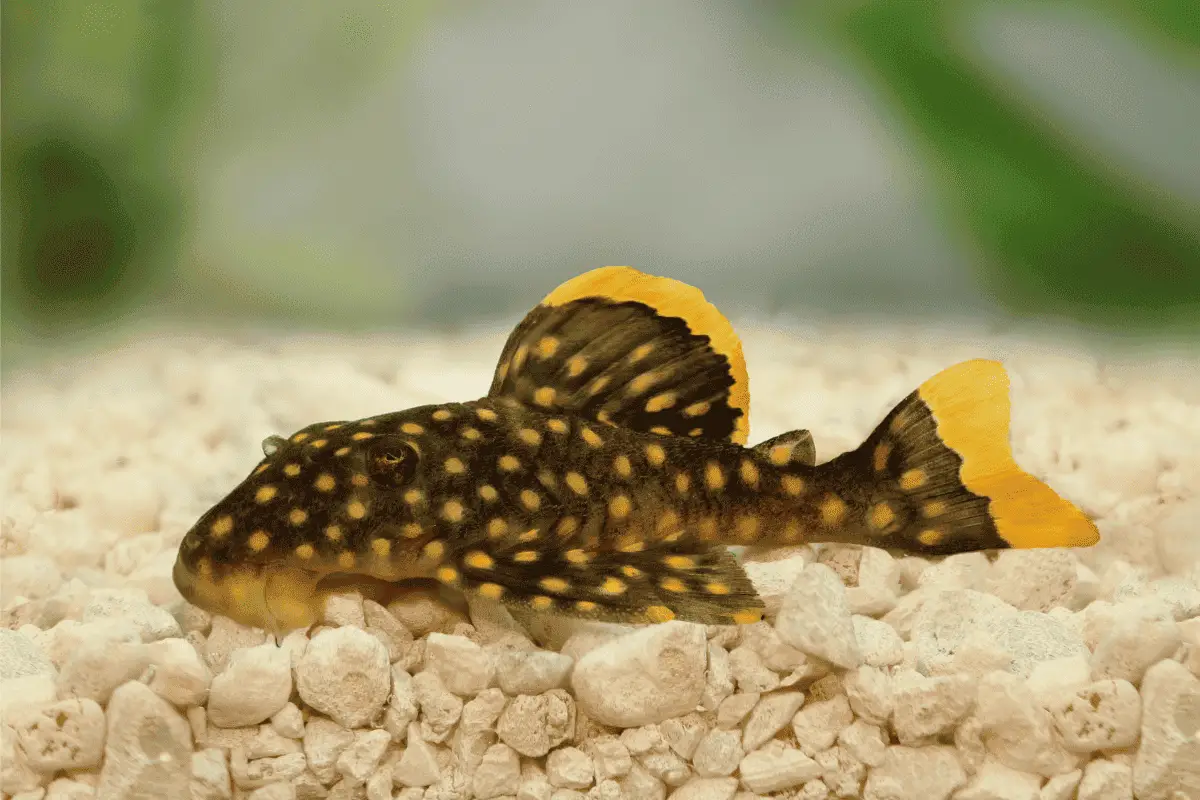A fellow aquarist once told me that Pleco fish can grow quite large and might produce a significant amount of waste.
Fortunately, they are impressive tank cleaners, so they can help manage their waste.
But does that mean you can skip using a filter in a Pleco fish tank? Can you rely solely on the fish’s cleaning abilities to maintain its environment?
In this article, I’ll address these questions and more to ensure you have all the information you need. Let’s get started.

Do Plecos Need A Filter?
Yes, Plecos do need a filter in their tank. You can’t solely rely on their natural cleaning behavior to sustain a healthy environment.
- Bioload Contribution: Plecos, especially as they grow, produce significant waste. Without a filter, toxins from their waste, like ammonia, can quickly build up and become harmful.
- Oxygenation: While Plecos are adept at gulping air, a filter promotes water circulation and oxygenation, ensuring they have a consistently oxygen-rich environment.
- Natural Behavior: In the wild, Plecos live in flowing rivers and streams. A filter replicates this environment, offering current which they find familiar and stimulating.
- Reduced Algae isn’t Enough: While Plecos consume algae, they don’t eat all types. A filter helps prevent unwanted algae blooms and keeps the water clearer than what Plecos can manage on their own.
- Overall Tank Health: A filter benefits not just the Pleco but all tank inhabitants. It removes detritus, excess food, and other organic matter, maintaining a balanced and healthy aquarium for everyone.
Also Read: Pleco Fish Tank Setup
Benefits of Having a Filter in Your Pleco Fish Tank
If you’re still unsure, let’s dive deeper and see why having a filter in a Pleco tank is important:
1. Improves Water Flow
A filter enhances water circulation within the aquarium, ensuring that every corner receives sufficient oxygenation.
Proper water flow helps in evenly distributing essential nutrients, making the environment ideal for your Pleco.
- Oxygen Distribution: Filters promote water movement which ensures that oxygen is adequately dispersed throughout the tank, essential for the fish’s respiration.
- Even Temperature: Proper circulation results in uniform water temperatures, preventing cold or hot spots that could be harmful to Plecos.
- Prevents Stagnation: With consistent water flow, there’s less chance of water becoming stagnant, which can become a breeding ground for harmful bacteria or parasites.
- Suspended Particle Removal: Filters capture and remove floating debris, ensuring your Pleco isn’t swimming in a murky environment and reducing chances of gill irritation.

2. Reduces the Need for Frequent Water Replacements
Filters help maintain water quality, thereby reducing the frequency of water replacements.
This not only saves time and effort but also reduces the stress on fish from frequent habitat changes.
- Consistent Environment: Fewer water replacements mean a more stable environment for Plecos, which leads to reduced stress and better health.
- Saves Time & Money: Reducing water replacements means spending less on water treatment products and dedicating less time to tank maintenance.
- Beneficial Bacteria Growth: Filters support the growth of beneficial bacteria which break down waste, reducing the need to frequently change the water.
- Less Waste Build-up: The mechanical aspect of filters helps to remove solid wastes, decreasing the rate at which the water becomes polluted.
3. Eliminates Ammonia, Nitrites, and Nitrates
These toxic compounds are the result of fish waste and uneaten food decomposition.
Filters host beneficial bacteria that convert these harmful substances into less toxic forms, enhancing the safety of the tank environment for Plecos.
- Nitrogen Cycle Facilitation: Filters assist in the aquarium’s nitrogen cycle where beneficial bacteria convert ammonia to nitrites and then to less toxic nitrates.
- Healthier Fish: Ammonia and nitrites are toxic even in small amounts; by reducing them, the filter ensures the Plecos remain healthy and vibrant.
- Reduction in Algae Growth: Excessive nitrates can lead to unwanted algae blooms. By controlling nitrate levels, filters indirectly keep algae growth in check.
- Minimized Fish Stress: With lower levels of toxic substances, fish experience less stress, leading to increased lifespan and reduced susceptibility to diseases.
Also Read: Do Plecos Need A Bubbler?

Four Filter Types for Plecos
There are four main filter types you can choose from when it comes to Plecos:
1. Canister Filters
Canister filters are a popular choice for Plecos due to their efficiency in maintaining water quality.
They offer a combination of mechanical, chemical, and biological filtration which is beneficial for large and messy fish like Plecos.
- Mechanical Filtration: Canister filters often have multi-layered sponges that trap larger particles. This ensures that the waste produced by Plecos is efficiently captured.
- Chemical Filtration: With chambers for activated carbon or other resins, canister filters can remove harmful chemicals. This keeps the water safe for sensitive species like Plecos.
- Biological Filtration: They contain ceramic rings or bio-balls that house beneficial bacteria. These bacteria break down ammonia and nitrite, crucial for the well-being of Plecos.
- High Flow Rate: Canister filters can handle larger volumes of water, making them ideal for tanks with big inhabitants. Plecos benefit from the steady flow and clean environment they provide.
2. Power Filters
Power (or HOB, Hang-On-Back) filters are efficient for moderate-sized aquariums but might struggle in larger setups with big Plecos.
They offer easy maintenance but may require frequent cleaning due to the Plecos’ waste production.
- Easy Maintenance: Power filters are user-friendly, with cartridges that can be changed without much hassle. This ensures regular upkeep without significant effort.
- Good Surface Agitation: Power filters help in gas exchange by agitating the water surface. This provides Plecos with an oxygen-rich environment.
- Potential for Over-cleaning: Due to their efficiency, they can sometimes strip beneficial bacteria. Care needs to be taken to ensure a stable biological balance for Plecos.
- Space-saving: They hang on the tank’s back, saving space in and around the aquarium. This provides more room for Plecos to move and hide.
3. Internal Filters
Internal filters, positioned inside the tank, can be useful for smaller setups but might not be adequate for larger Plecos or bigger tanks.
- Easily Hidden: With plants and decorations, internal filters can be concealed. This ensures that Plecos have a natural-looking habitat.
- Low Flow Rate: They’re not as powerful, making them suitable for smaller tanks. However, for larger Plecos, this might be insufficient.
- Limited Filtration: The smaller size means less media for filtration. This can be a challenge with waste-heavy Plecos.
- Occupy Internal Space: They take up space inside the tank, reducing the area for Plecos to explore and rest.
4. Undergravel Filters
Undergravel filters sit beneath the substrate and use a lift tube to circulate water. While they have biological benefits, they might not be the best choice for Plecos.
- Biological Filtration: The substrate becomes the filter medium, housing beneficial bacteria. This helps maintain a stable nitrogen cycle beneficial for Plecos.
- Substrate Cleaning: The water circulation helps prevent debris build-up. However, Plecos can disturb the substrate, which can cause the filter to clog.
- Potential for Dead Spots: Areas with poor water flow can become anaerobic, harming water quality. Plecos might suffer if such spots develop.
- Maintenance Challenge: Over time, detritus can accumulate below the plate. With Plecos producing a lot of waste, cleaning becomes challenging.

Important Considerations for Choosing a Filter for Your Pleco
Choosing the right filter for your Pleco is crucial due to their specific needs and waste production.
The size of your tank and the efficiency of filtration are paramount for the health of the Pleco.
- Tank Size: Choose a filter rated for your tank size or larger; for a 100-gallon tank with a Pleco, aim for a 150-gallon rating.
- Waste Management: Plecos produce much waste; opt for a filter with robust mechanical filtration, such as multi-layered sponges.
- Biological Filtration: Filters with ample biological media, like ceramic rings, ensure a balance of beneficial bacteria.
- Water Flow: Ensure the filter provides steady flow without creating turbulent currents to keep Plecos stress-free.
- Maintenance Ease: Due to heavy waste, choose filters easy to clean and maintain, such as ones with simple cartridge changes.
After considering all these aspects, I personally picked the Fluval C4 Power Filter (link to Amazon), and I couldn’t be more satisfied:
Temporary Solutions When You Don’t Have a Filter System
If you’re without a filter in your Pleco fish tank, here are some interim steps you can take:
1. Avoid Overcrowding Your Aquarium
Overcrowding leads to a rapid waste buildup which is especially detrimental for waste-heavy fish like Plecos. A manageable fish count is crucial in the absence of a filter.
- Waste Production: For instance, in a 30-gallon tank, it’s advisable to limit to one young pleco and a few small tank mates.
- Oxygen Levels: Depleted oxygen can affect all fish adversely. Aim for 1 inch of fish per 2-3 gallons of water to maintain adequate oxygen levels.
- Stress Reduction: Fish, particularly Plecos, can become stressed in crowded settings; ensure ample hiding spots using caves or driftwood.
- Natural Behavior: For a fish’s healthy behavior, it’s essential to maintain a balanced fish-to-space ratio, allowing each to establish its territory.

2. Increase the Number of Water Changes
Regular water changes become paramount to manually manage toxin buildup when you’re operating without a filter.
- Toxin Removal: Consider changing 20-30% of the tank’s water weekly, which helps extract accumulated nitrate, ammonia, and other contaminants.
- Oxygen Renewal: Each water change introduces fresh oxygen. Ensuring consistent renewal helps maintain a breathable environment.
- Clarity Maintenance: Regularly replacing water prevents it from turning murky, effectively removing particles and uneaten food that can particularly affect bottom-dwellers like Plecos.
- Balance Restoration: Water changes replenish vital minerals. Aim to test water parameters weekly to ensure the conditions are optimal for all tank inhabitants.
3. Use Ammonia Neutralizers
My recommendation: Fluval Ammonia Remover (link to Amazon).
In the absence of biological filtration, ammonia levels can spike, necessitating the use of neutralizers for short-term relief.
- Immediate Action: Add neutralizers promptly when ammonia levels reach 0.5 ppm or above, providing timely relief.
- Protection: Neutralizers convert harmful ammonia to non-toxic compounds, reducing risks to fish health.
- Short-term Solution: They’re a temporary measure. While effective, remember they can’t replace the comprehensive benefits of a dedicated filter.
- Safe Usage: Adhere to recommended doses, usually a few drops per gallon, but always read the product label to prevent any water chemistry disruptions.
4. Add More Aquatic Plants
Aquatic plants, besides their aesthetic value, serve as natural biofilters, contributing to a healthier tank environment.
- Natural Filtration: Fast-growing plants like Hornwort or Water Wisteria can absorb waste products, including those produced by Plecos.
- Oxygen Production: Through photosynthesis, plants release oxygen. Ensure a good mix of both floating and submerged varieties for optimal oxygenation.
- Algae Reduction: Healthy plants compete with algae for nutrients. Incorporate plants like Java Moss, which competes effectively for resources, reducing algae growth.
- Habitat Enrichment: Plants like Amazon Swords or Java Ferns provide natural hideouts and resting places, enhancing the habitat for all, including Plecos.
Also Read: Do Plecos Need Light?

Conclusions
For those of you in a rush, here’s a quick overview:
- Plecos require a filter to prevent harmful waste buildup and ensure a healthy tank environment.
- Filters enhance water circulation, reduce maintenance, and support beneficial bacteria growth in Pleco tanks.
- Filters eliminate toxins like ammonia, nitrites, and nitrates, promoting Pleco health and reducing algae growth.
- Canister filters are efficient for large Pleco tanks, while power filters are suitable for moderate-sized setups.
- Temporary solutions for filterless tanks include avoiding overcrowding, increasing water changes, using ammonia neutralizers, and adding aquatic plants for improved water quality and fish well-being.
